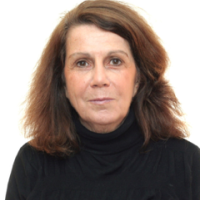Human Security and Development in the Arctic
On July 29, 2015, the Wilson Center’s Polar Initiative, Canada Institute, and Environmental Change and Security Program hosted a program on “Human Security and Development in the Arctic.” The event featured Anthony Speca, managing principal of Polar Aspect in Iqaluit (Nunavut), and Craig L. Fleener, Arctic policy advisor for Governor Bill Walker of Alaska. Anita Parlow, former advisor to the Harvard-MIT Arctic Fisheries Project, moderated the event and provided opening remarks. The speakers discussed two issues related to human security in the Arctic: Speca related the Nunavut experience in Canada, while Fleener spoke of the Alaska experience in the United States.
Research, enterprise, and exploration opportunities in the Arctic will expand as climate change renders the northernmost reaches of the globe more accessible—and visible—than ever before. Often overlooked, however, are the people who actually live there. Four million people make their home in the resource-rich Arctic, where developers and policy-makers are staking growing claims.
The Canadian federal government is not fulfilling its responsibility to Nunavummiut (the name given to the people inhabiting the territory of Nunavut), said Speca. The numbers are staggering: 35,000 people, 85 percent of whom are Inuit, inhabit a territory more vast than Alaska and encompassing a fifth of Canada’s total landmass.
Resources and qualified labor in Nunavut are scarce, due in part to the isolation of communities. There are few roads and places to land airplanes with supplies and as a result major logistical challenges to delivering goods necessary to sustain proper health.
As much as a third of Nunavut’s population does not have secure supplies of food; under such circumstances, the life expectancy of Nunavummiut resembles that of citizens of Occupied Palestine or Paraguay—not Canada. Furthermore, citizens must often tolerate a lack of common public services, such as electricity or clean water. Power cuts are common in some places and, at home, Nunavummiut are frequently cautioned to boil their tap water.
Despite these difficulties, Canada’s claim to Arctic sovereignty has always depended on the peoples of the North, and their well-being is a responsibility worth paying for, according to Speca.
Of course, residents of Nunavut are citizens of Canada, and deserve public services comparable to those provided to all Canadians. Herein lies the problem: the federal government allocates a block grant to Nunavut that is more based on what the federal government is willing to spend than the territory’s actual needs. If Nunavut is ever going to achieve the level of development it deserves, the federal government must allocate more funds and deliver improved public services.
The Arctic is an expensive place to live and work, and places like Nunavut will always depend on federal support. There are opportunities for economic growth, said Speca, led by the lucrative mining, construction, and fishing industries, but these avenues require federal support to establish the infrastructure of an integrated northern economy. The Canadian government must think of its Arctic territory as an integral part of the country—from both an economic and cultural standpoint—and not just as remote national space.
Craig Fleener, Alaska’s Arctic policy advisor, began with a vivid description of Fort Yukon, the land he grew up in. Despite the undeniable romance and adventure of the High North—lightless tracts of tundra seized with winter’s brutal grip and summer months of midnight sun—a plain truth affects the lives of all Alaskans: like Nunavut, many of the decisions about the United States’ 49th state are made in distant places by individuals far removed from the Arctic way of life.
“Government overreach” on the federal and state levels, Fleener argued, threatens local people’s ability to adapt to a changing Arctic. For example, hunting bans legislated by the State of Alaska limit the ability of rural Alaskans to meet their needs in a subsistence-based economy. In much of Alaska there are few grocery stores, and residents rely on the resources around them to survive. By setting specific seasons during which Alaskans can harvest these resources, however, the state limits possible responses to changes in the environment. What if caribou arrive a week before their scheduled hunting season? If rural Alaskans decide they do not want to starve, they must break the law, Fleener said.
He advocated for more flexibility across the entire spectrum of legislation, not just in the areas of hunting and fishing regulations. Receding sea ice means that coastal permafrost is less protected, causing soil erosion to accelerate. Most communities in northern Alaska are coastal, and some residents have already been forced to relocate buildings and entire villages as the soil becomes unstable. Current land ownership patterns, however, make it difficult for coastal inhabitants to simply pack up and move as they might have done in the past. More than two-thirds of the state is owned by the federal government, so that has become trespassing.
Moreover, government housing infrastructure favors sedentary communities, and there are obvious logistical difficulties involved in moving a house built on foundation in a region where there are few roads and permafrost melt roils the ground. Coastal inhabitants—and rural Alaskans in general—must be allowed to adapt to the changing landscape around them if they are going to survive. Decisions concerning Alaskans should fall into the hands of Alaskans, Fleener emphasized.
Fleener argued that renewable energy innovation will provide will help diversify the Alaskan economy away from oil. With the consumer price of energy remaining high in many rural areas, Alaska has an incentive to become a leader in renewable energy resources and expertise. The current lack of traditional energy infrastructure in the state makes renewable energy an ideal means by which communities can generate stably priced, environmentally responsible energy through abundant wind, river, and wave resources.
Alaska is a beautiful place, Fleener said, but keeping it that way will require a balance between innovative resource development and environmental stewardship.
What developers and policymakers should know is that the Arctic is a dynamic system with many moving parts. Fleener’s vision of Alaska’s future includes less federal oversight and improved partnerships between state government and residents, both rural and urban. In Alaska, as in Nunavut, the growth of industry cannot proceed without input from inhabitants of the North. At the same time, allowing for the expansion of commercial activity in the Arctic is a decision that locals must themselves make, and this is possible only if locals are allowed to have a greater impact in the legislative process. Northern communities feel conflicted about economic development in the Arctic, but they want to preserve the power of choice.
Related materials:
- Blog post: "Development in U.S. and Canadian Arctic Not Only About Oil and Gas, but Providing for People," by Spencer Wuest at the New Security Beat blog
- Podcast and related article: "Providing for the Periphery: Anthony Speca on Development for Canada's Resource-Rich Nunavut," New Security Beat’s Friday Podcasts
Speakers

Deputy Director of the Council on State Governments--Eastern Regional Conference, New York; former Director of the Polar Initiative and former Director and Senior Advisor to the Canada Institute

Hosted By

Polar Institute
Since its inception in 2017, the Polar Institute has become a premier forum for discussion and policy analysis of Arctic and Antarctic issues, and is known in Washington, DC and elsewhere as the Arctic Public Square. The Institute holistically studies the central policy issues facing these regions—with an emphasis on Arctic governance, climate change, economic development, scientific research, security, and Indigenous communities—and communicates trusted analysis to policymakers and other stakeholders. Read more


Canada Institute
The mission of the Wilson Center's Canada Institute is to raise the level of knowledge of Canada in the United States, particularly within the Washington, DC policy community. Research projects, initiatives, podcasts, and publications cover contemporary Canada, US-Canadian relations, North American political economy, and Canada's global role as it intersects with US national interests. Read more


Environmental Change and Security Program
The Environmental Change and Security Program (ECSP) explores the connections between environmental change, health, and population dynamics and their links to conflict, human insecurity, and foreign policy. Read more
